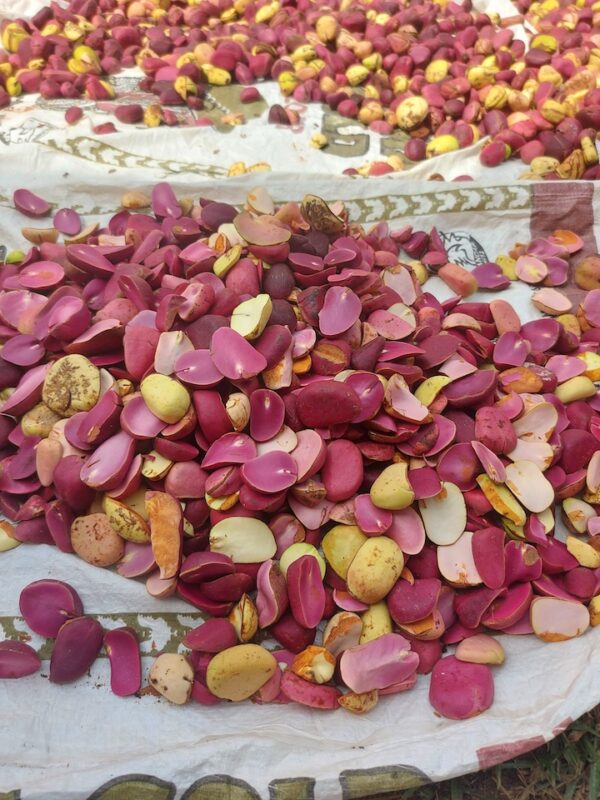What is Dried Split Ginger?
Dried split ginger, derived from the rhizome of the Zingiber officinale plant, is a widely used spice and traditional medicine. This flowering plant has herbaceous perennial properties, with annual pseudostems that reach a height of one meter. These pseudostems consist of curled leaf bases and thin leaf blades. The plant produces inflorescences with pale yellow petals and purple margins that sprout from the rhizome on separate branches. Ginger belongs to the Zingiberaceae family, along with turmeric, cardamom, and galangal. Interestingly, some dicots in the Asarum genus are sometimes referred to as wild ginger due to their similar flavor.
Historical Background and Spread of Dried Split Ginger
The term “ginger” finds its origins in various languages, including Old English, Medieval Latin, Greek, Prakrit, and Sanskrit. Ginger is native to Southeast Asia’s Maritime region and has been cultivated and utilized by the Austronesian peoples since ancient times. Alongside ginger, they also grew and consumed turmeric, white turmeric, and bitter ginger. These plants were used to flavor meals and were even eaten raw. The leaves were woven into mats, and ginger held sacred importance, featuring in healing rituals and protection ceremonies. As the Austronesians expanded their reach approximately 5,000 years ago, they carried ginger with them, spreading it across the Pacific Islands and possibly introducing it to India during early contact with the Dravidian-speaking peoples of Sri Lanka and South India.
Ginger’s journey continued as merchants transported it from India to the Middle East and the Mediterranean during the spice trade. It was predominantly cultivated in southern India and the Greater Sunda Islands, alongside other spices like peppers and cloves. Ginger is known for its yellow blooms, and its reed-like perennial appearance makes it a popular choice for landscaping in subtropical areas. The rhizome is traditionally harvested after the stalk withers, undergoing a process to prevent sprouting. In various cultures, ginger is used to create sweetmeats, condiments, and sialagogues from the aromatic perisperm of the Zingiberaceae family.
Health Benefits of Dried Split Ginger
Dried split ginger is associated with numerous health benefits and possesses various properties, including:
1. Treating nausea, especially morning sickness
2. Containing gingerol, a compound with potent medicinal properties
3. Assisting with osteoarthritis
4. Aiding in weight loss
5. Lowering blood sugar levels and improving heart disease risk factors
6. Fighting infections
7. Potentially improving brain function
8. Providing protection against Alzheimer’s disease
9. Containing substances that may help prevent cancer
10. Lowering cholesterol levels
11. Reducing menstrual pain
12. Assisting in the treatment of chronic indigestion
13. Fighting germs and promoting oral health
14. Lowering blood sugar levels
15. Soothing sore muscles
16. Relieving indigestion
Top Exporting & Importing Countries of Dried Split Ginger
The journey of dried split ginger from farm to destination involves multiple stages, with village traders collecting produce directly from farmers. Asian countries have established a unique distribution system for trading dry ginger, involving a network of small retail outlets. The top exporting countries of dried split ginger are:
1. India (1,788,000 tonnes)
2. Nigeria (691,239 tonnes)
3. China (581,137 tonnes)
4. Nepal (297,512 tonnes)
5. Indonesia (174,380 tonnes)
6. Thailand (166,923 tonnes)
Several countries are major importers of dried split ginger, including:
1. United States (12.2%)
2. Netherlands (11.57%)
3. Pakistan (7.44%)
4. Japan (7.14%)
5. Bangladesh (6.58%)
6. Germany (5.58%)
7. United Arab Emirates (4.29%)
8. United Kingdom (3.98%)
9. Canada (3.05%)
10. Saudi Arabia (2.99%)
These countries play a significant role in the global trade of dried split ginger.
How To Safely Source Your Dried Split Ginger Produce
If you find the right export company, buying directly from them can make the purchase process easy and stress-free, when compared with doing the sourcing on your own. That said, there are few things to note when dealing with an export company in Nigeria or Africa. The specific requirements for Nigeria are listed below, but they mostly apply to other African countries:
- The exporting company must be registered with the Corporate Affairs Commission (CAC) to make sure the company is registered and permitted to carry out business operations.
- The export company must also be registered with the Nigerian Export Promotion Council (NEPC).
- The company must possess a domiciliary account to accept international payments.
The company should get all necessary export-related documentation done before the shipment leaves the port of origin. Some of the documents are:
- Certificate of origin
- Bill of lading
- Inspection Certificate (SGS, Cotecna, Bureau Veritas, Intertek, etc)
- Phytosanitary certificate
- Fumigation certificate
Where To Find Reliable Exporters
An important question that still needs to be answered is how to find Dried Split Ginger exporters in Nigeria. You can use any of the methods listed below:
- Attend trade fairs
- Use search engines like Google, Yahoo, etc.
- Search for agents on Linkedln
- Sign up on trade platforms (e.g. Alibaba, Tradeford, Go4WorldBusiness)
Neogric offers a reliable global order fulfilment solution for Dried Split Ginger and other agric produce. Our end-to-end supply chain solution makes the export of quality Dried Split Ginger easy, quick and safe. From the point of placing your order till it successfully gets delivered, we ensure you have nothing to worry about.
Price Of Dried Split Ginger
The unit price of Dried Split Ginger depends on a host of different factors including:
- The grade of the produce (usually the more the processing, the higher the price)
- The price of the raw material
- Age of the seeds (this can affect the price)
- The quantity ordered (the greater the quantity, the cheaper you can get it per ton)
- Harvest season (it is more costly when it is out of harvest season).
- Freight & haulage cost
- Percentage of markup
- Import duties
- Distance from the country of origin
- Technology/Infrastructure available in country of origin
- Relationship between the buyer and seller
That said, as at January 2023, the price of Dried Split Ginger is USD 3.25/Kg
That said, as at July 2022, Dried Split Ginger costs between $3,000 and $3,500 per metric ton (1,000 kilograms) in the international market (i.e. $3/kg to $3.5/kg).
How To Pay For Your Dried Split Ginger
You can pay for your Dried Split Ginger using different methods, but three of the popular ways of paying for your agric produce are:
- Bank (T/T) Payment
- Advance Payment
- Letter of Credit (LC)
Bank Payment (T/T)
Bank payment is also known as T/T, “Telegraphic Transfer” or “Telex Transfer” In other words, it is an international wire of funds from the buyer’s bank to the seller’s bank.
A T/T is technically not the same as a wire transfer, which is often done through the SWIFT network. However, when a seller or supplier asks for a T/T payment, a wire transfer is what they are really asking for.
The wire transfer based on the SWIFT system is the most common payment method in international trade. Typically, it takes 3-5 working days to clear, and generally costs between 25 and 50 USD, depending on your agreement with the commercial department in your bank.
Advance Payment
There are sellers that will demand anywhere from 30% to 50% advance payment, and for good reason. If both parties have done deals in the past, sellers can ask for a percentage of the sales (about 30%) before they ship the produce and they can request for the remaining amount after a scanned copy of the Bill of Lading has been sent to the buyer.
It is the safest option for exporters and it also guarantees that they will have some funds to help with sourcing. It is popular among manufacturers on B2B marketplaces like Alibaba and also with commodity traders.
However, advance payment carries considerable risk for the importer (buyer) because the exporter (seller) might not be under as much pressure to ensure quality checks compared with a stricter form of payment. Some might even disappear entirely.
Having said that, advance payment is very useful and is widely used. For instance, the seller might need to secure the commodity in the face of increased competition. It can also be used when the exporter needs some money for sourcing the produce or for processing raw materials.
The most important thing is for both importer and exporter to build mutual trust by having a track record of successful deals with each other or other known companies.
Letter of Credit (L/C)
Letter of Credit is an agreement generated by the bank of the buyer, guaranteeing payment once certain conditions are met. It is one of the safest types of payment available to both buyer and seller.
Some of the types of Letter of Credit are:
- Commercial Letter of Credit,
- Sight Letter of Credit
- Transferrable or Non-Transferable Letter of Credit
- Standby Letter of Credit (SBLC)
- Usance or Deferred Payment Letter of Credit
- Revocable or Irrevocable Letter of Credit
- Confirmed or Unconfirmed Letter of Credit
- Revolving Letter of Credit
- Green Clause Letter of Credit
- Red Clause Letter of Credit
L/Cs are not totally safe (for either buyer or seller) too. For instance, sellers can ship substandard products or those that are different from the ones agreed upon. In this case, the seller gets paid and the buyer receives good he cannot use.
And speaking of the dangers of L/Cs for the exporter, the conditions in the Letter of credit might be practically impossible to fulfil; if an exporter agrees to such, he might be unable to receive payment. A report stated that of the letters of credit received in the UK, 50% are unworkable while 70% are rejected by the banks for payment.
Shipping & Delivery Terms
When shipping your products, it is important to take note of a few factors:
Order Quantity
For smaller shipments, airfreight is often the preferred option but as the order volume increases, sea freight could become significantly cheaper. Usually when the order is close to a full container load (20 ft), sea freight is used. Despite all these, the Covid-19 pandemic has caused an increase in cost of delivery of products.
Cost of Delivery
When the order is of a large volume, sea freight often turns out cheaper than air freight. In fact, airfreight could be up to 6 times more costly than sea freight if the volume is large enough.
Time of Delivery
Sometimes, time will be more important to the buyer than the cost of delivering the produce. In this case, air freight will be the logical option (as stated above, the cost will be more). But if you have more time as a buyer, you should strongly consider using sea freight.
Incoterms
Incoterms refer to generally accepted shipping and payments terms. For example, buyers that have representatives in the source country or that can negotiate with the freight company can use the Free of Board (FOB) terms, since it gives them more control and can save them some money.
However, if the shipment is small or the buyer doesn’t have an extensive network to effectively handle payment for freight, insurance and port charges, he will be better off choosing the Cost-Insurance-Freight (CIF) payment option. You can find out more about Incoterms here.
Import Your Dried Split Ginger The Right Way with Neogric
Neogric is a trusted Global Order Fulfilment And Sourcing Solution Company with deep expertise in the Dried Split Ginger industry. Our end-to-end supply chain solution makes the export of quality Dried Split Ginger easy, quick and safe. Whichever region of the world you are, be it Europe, Asia, USA, Canada, Africa, South America or Oceania, you can reliably order your agric products and we will ensure it is successfully delivered to you.
Our Dried Split Ginger trade specifications are listed below:
- Origin: Nigeria
- Product Name: Dried Split Ginger
- Product Types: Dried
- Physical Specification: Based On Buyer’s Specification
- Quantity: Based On Buyer’s Specification
- MOQ: 15 Metric Tonnes
- Trade Process: Ex Works/FOB/CIF
- Inspection: SGS/Cotecna/Intertek/Bureau Veritas
- Packaging: Based On Buyer’s Specification
- Payment Method: TT (Bank Transfer) or L/C
- Shipping Time: 15 to 25 Days After Confirmation of TT or L/C
- Loading Port: Lagos, Nigeria or Tema, Ghana
Expected Shipping Documents
- Bill of Lading
- Certificate of Origin
- SGS Inspection Certificate
- Phytosanitary Certificate
- Fumigation Certificate
- Commercial Invoice
- Packing List
Contact Us
Tel: +2348147860157
WhatsApp: +2348147860157
Email: neo@neogric.com
To Contact:
Contact UsTel: +2348147860157
Email: neo@neogric.com
WhatsApp:
Place Your Kola Nut Order
Click the button below and tell us about your Kola Nut needs. We will be glad to help you export Kola Nut based on mutually agreed terms.


